The processes involved in making an album are as interesting as they are varied. There are many ways to record a song and almost limitless possibilities to explore. Each and every artist develops their methods and for 30 years, Mark and I have stumbled from one crisis to the next, in the vein hope of bringing out the best in his ever more prolific production of songs. We spend all our recording time at Mark’s now 10 year-old London facility, British Grove Studios essentially playing, recording, experimenting, sound-searching, and generally having fun as a consequence of a relatively unrestricted time frame.
With advances in technology combining with journeys into the world of recording from the past, we blend the best of the old and the new. So what is the best of the old? I hear you ask. I suppose that would be ‘tubes’ and ‘tape’. (what about the muso’s I hear you say) It has long been known that tape saturation can play a big part in creating analog warmth but these days not everyone has had first hand experience of recording with a tape machine. At BG, with six Studer A800’s primed and ready to go at all times, it’s not uncommon. We use a system which has been around for several years known as CLASP or Closed Loop Analog Signal Processor. It runs in the DAW (Digital Audio Workststion) as a plug-in but behind its simple facade run some extremely complex switching and delay compensation calculations. The transport of a Studer A800 with a 16 track head block is controlled by the plug-in. It warns you when the tape is nearing the end of the reel whereupon you hit RTZ (return to zero) and about a minute later, you’re ready to record again. Recording over and over the same piece of tape is not an issue as long as the tape heads are kept scrupulously clean, however we do renew the tape reel after a few weeks or so.
One of the reasons tape always sounded good is that it tends to round off the edges of any harshness in the recording be it from FET microphones or harsh transistor preamp tones. Because (with Clasp) the recording only passes through the head block once, there is no high-end degradation, just that analog warmth that only real tape can provide. The sound files and playlists then reside at 96k in the DAW available for any modern editing processes we decide to use. The old and the new.
Our favourite Neumann U67
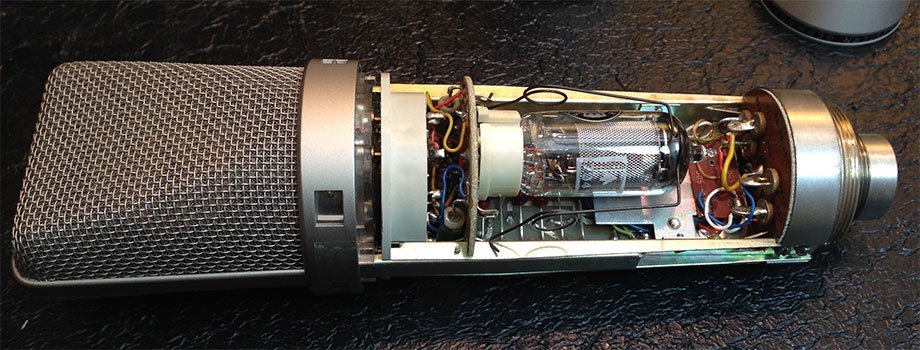
Laying down a Vox part for ‘Beryl’
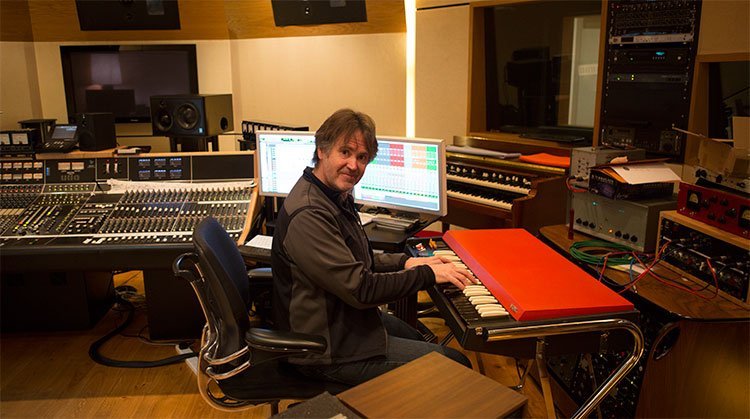
We use an array of our ‘favourite’ microphones but are always open to trying new combinations with mic pre’s. and find ourselves making interesting discoveries on a daily basis. Apart from our usual selection of trusty, crusty U67’s, U47’s, M50’s and various Ribbon’s, modern microphones such as the Shoeps Colette cardioids and Brauner tubes often find their way into the recording chain. ADK too make a range of very inexpensive large diaphragms and are already on the record (we found that was perfect for one of the strummed Gibsons). The standard mics on Mark’s amps tend to be a Shure SM57, a Neumann U67, a Royer 121 ribbon and a pair of Neumann M50’s for any room sound. His acoustics are painstakingly captured by combinations of Neumann KM56, KM64 and KM 54 together with a pair of Schoeps Collettes with MK4 cardioid capsules. EQ is never used upon recording, rather the right mic/pre combination being preferred.

The band session.
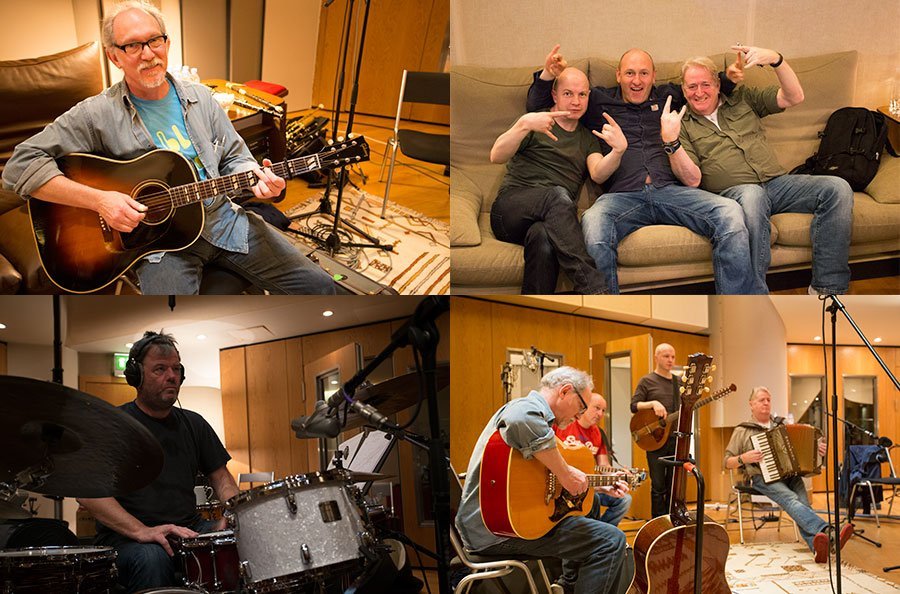
So with a selection of songs ready for drums and bass overdubs and a whole pile of ‘new’ songs, we embarked on a band session in Studio 1. The line-up was a little different this time in that Mark invited the great Bruce Molsky to join us. John McCusker, Mike McGoldrick, Phil Cunningham made up the folk element whilst Glenn Worf and Ian Thomas formed the backbone. With Joe Kearns and I at the helm in the control room we set about the sessions. With a full band recording live, another Clasp unit was required AND another Studer A800. No problem. The system was set up by Graham Meek and the team and all ran smoothly. One particular artefact of using tape machines is ‘rewind time’. With Hard disk recording, you can be ready to go at the press of a button but when tape has to be rewound, there is time to ponder and as a producer, I think this is beneficial to subsequent takes as musicians can use the time (sometimes at least a minute) to reflect on their performance, charts and parts…or lack thereof! I know when I’m out there on the floor playing, when the engineer is ‘spooling back’ I’m more often than not, grateful for the moment. Oh and another nice by product of using tape is the smell of rewinding tape as the band pass through the machine room on their way back into the control room apres-take. To me it has the same nostalgic effect as freshly baked bread. Maybe that’s just me! It IS just me isn’t it.
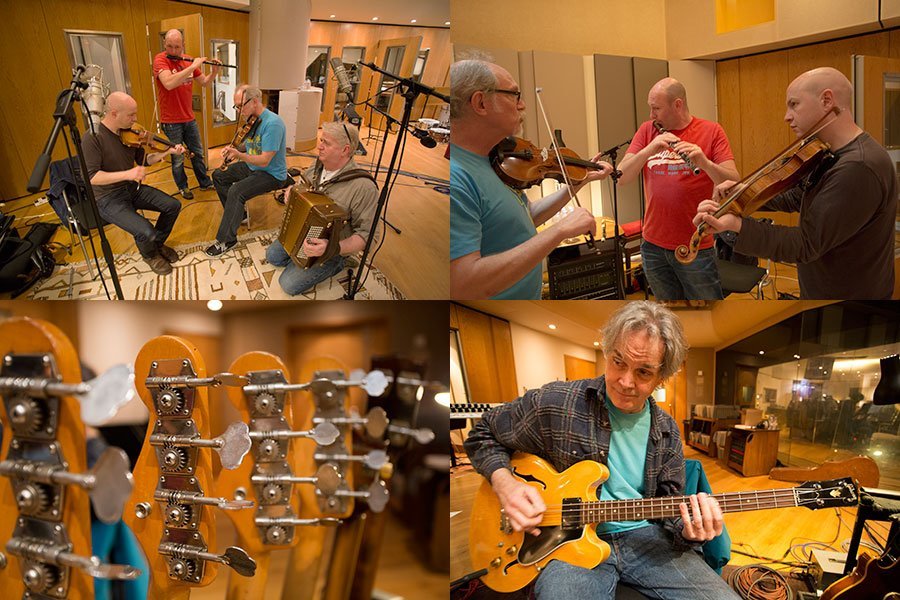
Of course, the recording space at BG is now most familiar to all of us and fine tuning the room and playing with room mics is always a treat. Flexibility is the name of the game here and the booths can easily accommodate any hare-brained production ideas. Here’s Joe Kearns at the Neve 88R..
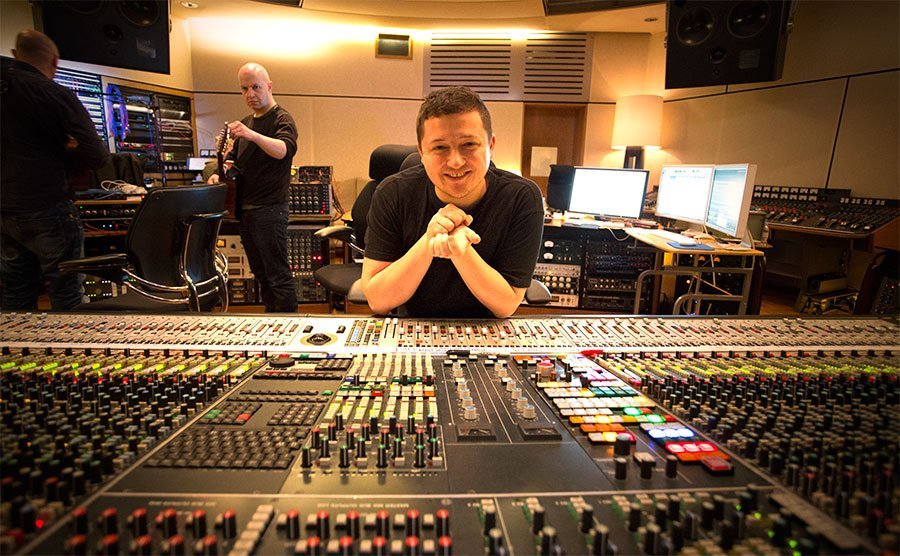
After 7 days of intensive, focussed yet relaxed recording punctuated only by the occasional evening pint, we’d covered many more songs than we expected to. Mark and I then moved on to the next stage in the process. Back into Studio two and some serious comping and more experimentation.
There are of course overdubs still to do and with that come a few guests, one of which being the lovely Ruth Moody. Ruth came in last week on a visit to the UK and wowed us once more with her singing on a few tunes.
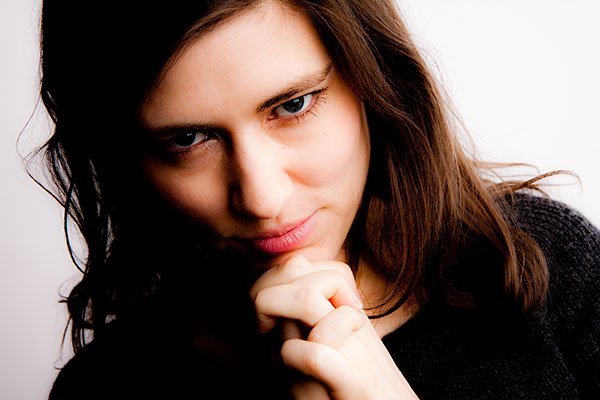
Nigel Hitchcock has been in a couple of times too and yesterday he came along with Trumpet Maestro Tom Walsh. Pictured here with Mark, they played on a gorgeous track on which Ruth sang.

